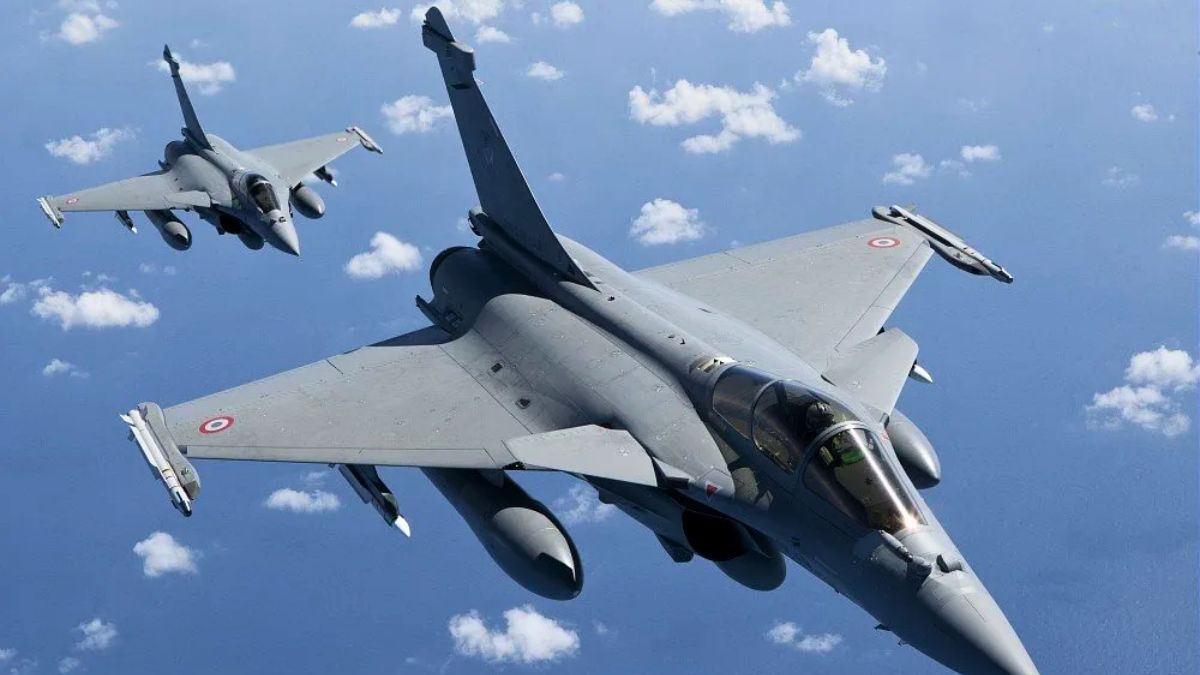Seems like the Indian Air Force would have to bid adieu to the Rafale fighter jets deal with French major Dassault Aviation. This is because the Ministry of Defence has returned the IAF’s ‘Statement of Case’ (SOC) for the acquisition of 114 multi-role fighter aircraft, terming the proposal “incomplete.”
The defence ministry had in September 2025 started examining a proposal from the IAF to procure 114 ‘Made in India’ Rafale fighter jets in collaboration with French manufacturer Dassault and Indian aerospace firms. IAF’s Rafale deal was estimated to be worth over Rs 2 lakh crore.
If complete, this acquisition would take the number of Rafales in India’s arsenal to 176, adding to the 36 already inducted by the IAF and 36 ordered for the Indian Navy under separate government-to-government agreements. However, it has now been learnt that the Defence ministry has flagged the proposal as incomplete.
Defence ministry shadow over IAF’s 114 Rafale jets deal?
According to sources quoted by Times Now, the ministry has sought further discussions with Dassault Aviation, the French manufacturer of Rafale fighter jets, to ensure that the deal aligns more closely with India’s Atmanirbhar Bharat (self-reliance) policy. Dassault, which has already supplied 36 Rafale jets to the IAF and Navy, remains one of the top contenders for this multibillion-dollar contract.
However, the government appears intent on using the upcoming negotiations to push for greater domestic production and technology transfer.
What is India demanding under the Atmanirbhar push?
According to top government sources, India has set out two key conditions before proceeding with the deal – majority production in India and a significant indigenous content.
Majority Production in India – While some fighters may arrive in flyaway condition, the bulk of the 114 jets must be manufactured in India. Dassault would be required to set up a production line in partnership with an Indian company, a move expected to bolster local defence manufacturing.
Substantial indigenous content – The MoD is insisting that indigenous content should exceed 10–15%, potentially reaching up to 75%, so that Indian defence firms, both public and private, gain significant participation in the project.
Sources further added that the government views this as a strategic opportunity to deepen India’s defence ecosystem rather than simply sign another import-heavy purchase.
How is Dassault responding to India’s terms?
French aerospace major Dassault has expressed interest in establishing a Maintenance, Repair and Overhaul (MRO) facility in Hyderabad, signalling its willingness to invest locally. However, officials noted that the fine print, including cost, timelines, and division of responsibility, remains under discussion.
The MoD also wants clarity on who will bear responsibility for production delays if the fighters are made in India, a question that stalled earlier talks between the IAF and Dassault.
Worth noting here is that the IAF’s operational strength has dropped to around 30 fighter squadrons, far short of the required 40 squadrons for optimal combat readiness. Several existing aircraft, including the Jaguar and MiG-29, are nearing the end of their service lives.
While Hindustan Aeronautics Limited (HAL) is expected to deliver 180 Tejas Mk1A fighters over the next 7–8 years, the 114-fighter deal is seen as crucial to bridging the capability gap and maintaining air superiority amid regional threats.
Bigger picture: India’s drive toward defence self-reliance
The push for higher local manufacturing and indigenous content reflects New Delhi’s long-term strategic goal, transforming India into a global defence hub. If the 114-fighter programme proceeds as envisioned, it could become one of India’s largest Make-in-India defence projects, combining operational necessity with industrial transformation.
